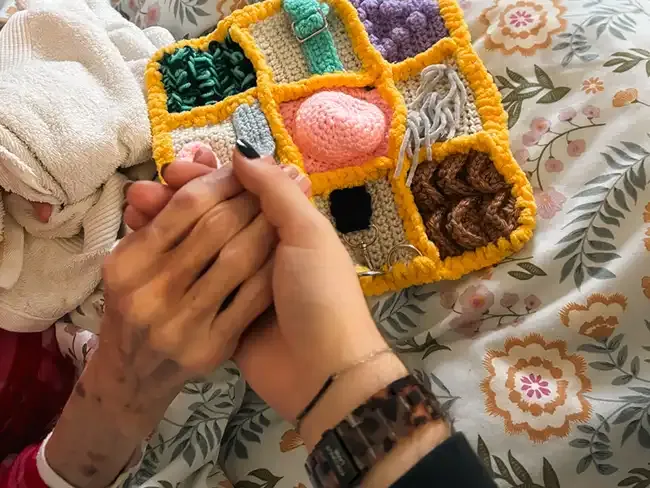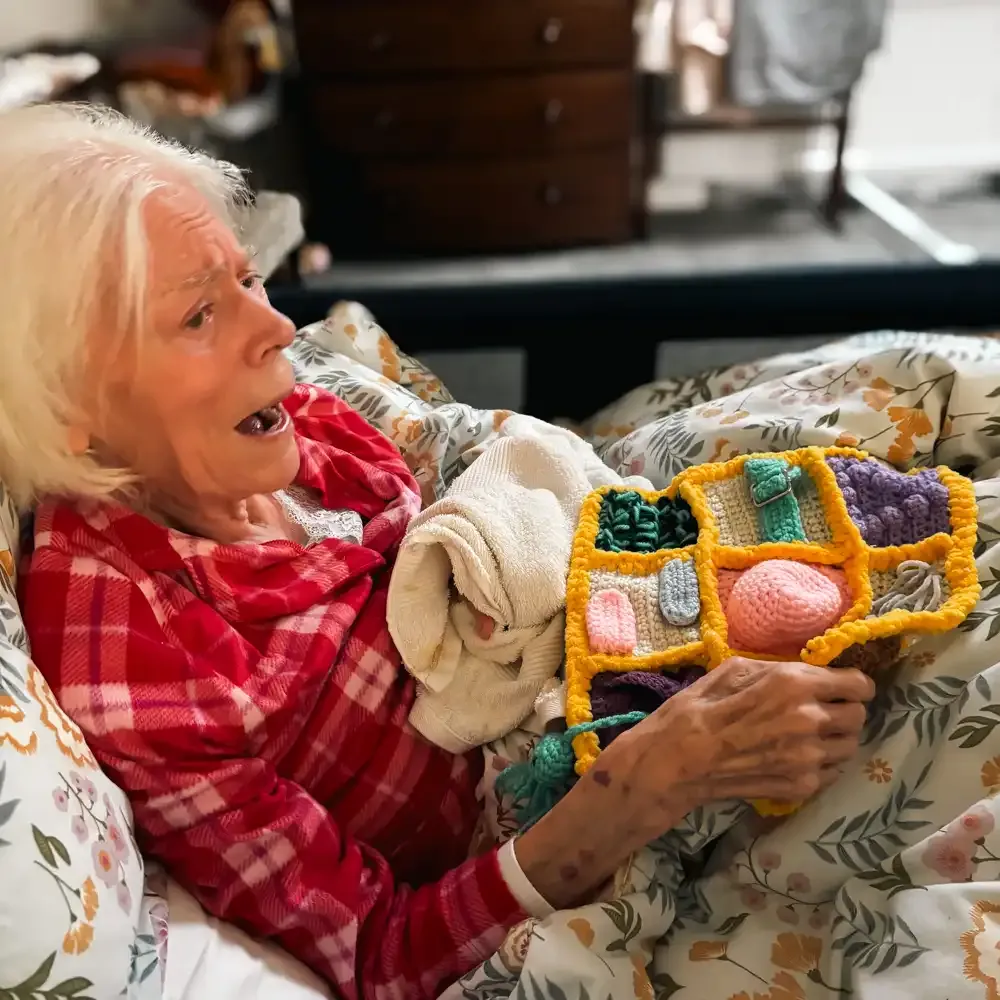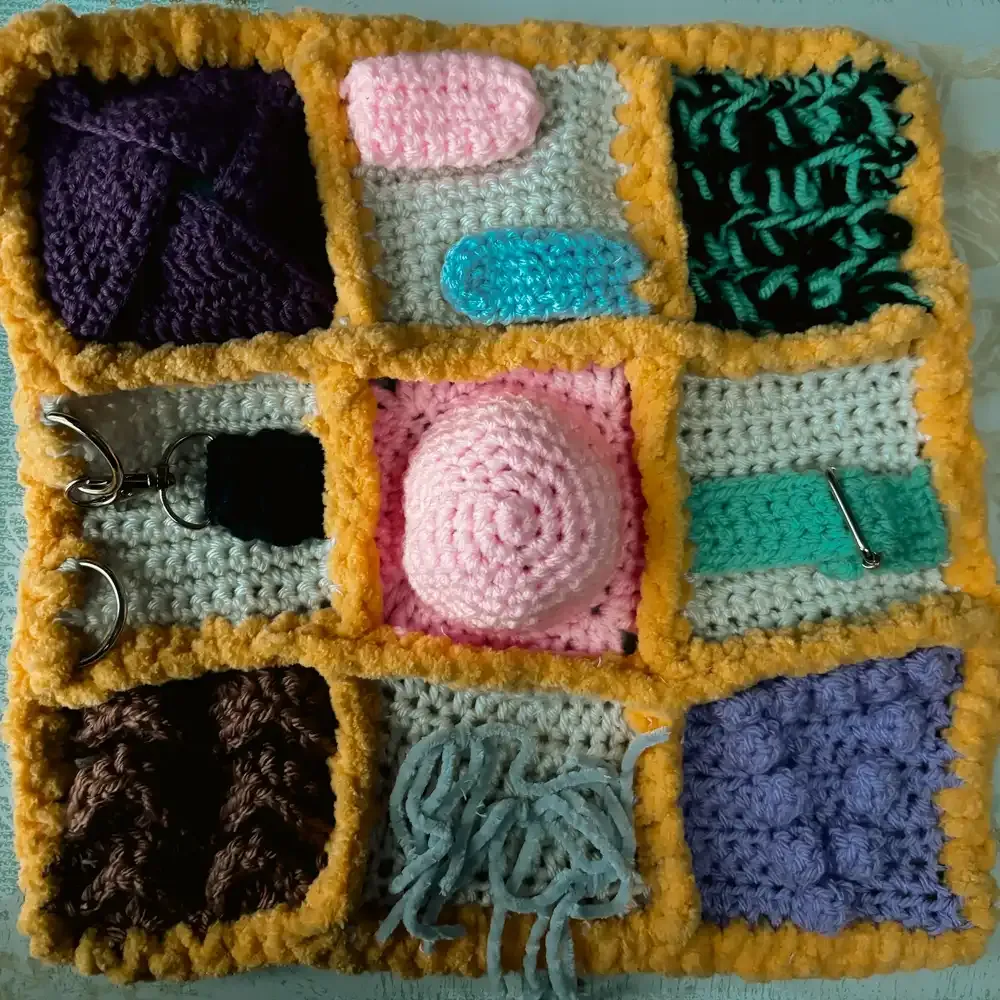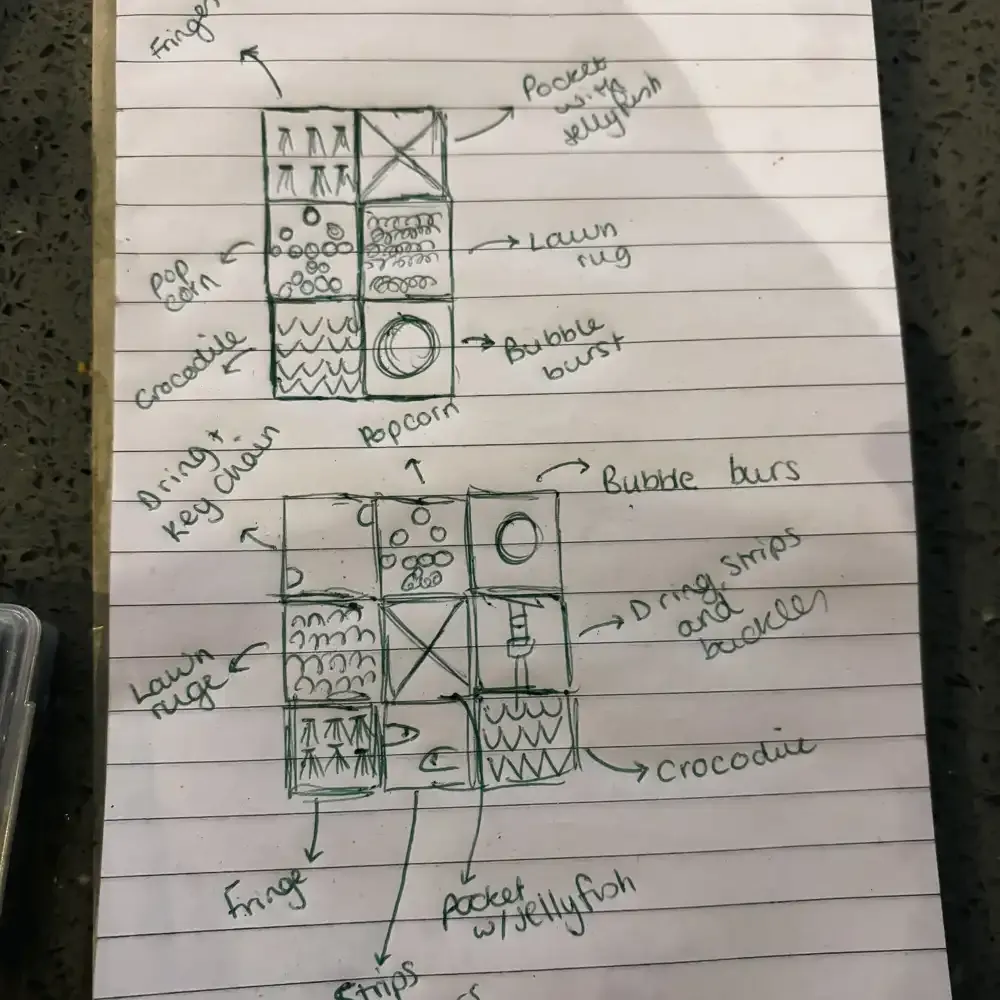Carer Elyshia Creates a Dementia Fidget Blanket for Our Client
A Heart-Warming Act of Kindness
Acts of kindness happen every day in care, but some gestures go above and beyond. One of our wonderful carers, Elyshia, recently dedicated her time and creativity to making a handmade dementia fidget blanket for one of our clients. The result was not only thoughtful and deeply personal, but also incredibly meaningful for the individual receiving it.

In this article, we celebrate the touching moment when our exceptional carer assistant, Elyshia, handcrafted a lovely fidget blanket for her client, Sue.
A Thoughtful Creation With Real Purpose
When Elyshia was asked if she could create a dementia fidget blanket, she immediately embraced the idea. She knew she wanted to create something special—something that would truly bring comfort, familiarity, and engagement.
Here’s what Elyshia shared about the creative process:
“When I was first asked to create a dementia blanket for one of our customers, I started researching online what other people had created to get some ideas. This helped me form a plan which came together fairly quickly.

The blanket was designed with a thoughtful combination of:
Soft and textured yarns
Fine motor features like buckles, buttons and tabs
Bright colours to stimulate visual engagement
Tactile sections to encourage touch and comfort
The moment our client received the blanket, their joy was immediate—they held it close and didn’t want to let go. Moments like this remind us that care is not only about support; it is also about compassion, creativity, and human connection.
Behind the Scenes:
The Crafting Process
Creating a dementia fidget blanket is as much about imagination as it is about skill. For Elyshia, the process began long before the first stitch. She approached the project with intention, research and a genuine desire to tailor the blanket to the individual receiving it.
“I knew I wanted to create a blanket that had a mixture of textures and fine motor activities for Sue, especially when I found out that they used to be a seamstress and loved the feeling of different textures. From there it was pretty easy to build up the blanket to something I was happy with, experimenting with different colours and textured yarns.”
Research & Inspiration
Her first step was exploring what others had created—looking at different styles, layouts and common features used in dementia fidget blankets. This helped her form a plan that balanced sensory stimulation with safety and comfort.
Designing the Layout
The next stage was sketching ideas, mapping out small squares that each offered a different tactile experience. These included:
Soft crochet weaves
Popcorn stitches for raised textures
Tactile tabs, straps and loops
A soft dome centrepiece
Secure key-chain attachments
“Jellyfish” style strands for gentle fidgeting
The hand-drawn designs helped her visualise how each sensory element would interact.
Choosing the Materials
Elyshia selected yarns that were soft but varied in texture—smooth, fluffy, knitted, crocheted, ribbed and looped. The mix of fibres was essential in creating something that would feel interesting and soothing in the hands.
Crocheting Each Square
Rather than creating one large piece, Elyshia crocheted each section individually. This allowed her to focus on variety:
Bright colours for visual stimulation
Different stitch techniques for fine motor engagement
Small safe attachments for fidgeting
Each piece had its own “purpose”, making the blanket not only beautiful, but thoughtfully interactive.
Final Assembly & Finishing Touches
Once all the sensory squares were complete, Elyshia stitched them together with a soft, fluffy border. Every attachment was double-checked for security, ensuring it was safe, sturdy and durable for everyday use.
The Emotional Moment of Giving
Being able to give the blanket to Sue after it was finished was a delight as they were very happy with their gift and would not let it go from the moment they had it. It’s always great to see your creations being appreciated by others, and I hope the blanket will provide comfort to the client.
How Dementia Fidget Blankets Help People Living With Dementia
Dementia fidget blankets (also known as sensory blankets, activity blankets or fidget quilts) offer important benefits that go beyond comfort. They can play a therapeutic role for individuals living with cognitive decline.
1. Reducing Anxiety and Restlessness
Fidgeting, pacing and agitation are common dementia symptoms. Sensory blankets offer a calming outlet for the hands and mind.
2. Encouraging Fine Motor Skills
Tabs, zips, buttons and textured areas help keep hands active and engaged, supporting dexterity.
3. Providing Comfort Through Familiarity
For someone who once worked with fabrics—like a seamstress—the soft textures and materials can spark memories and emotional warmth.
4. Offering a Meaningful Distraction
The calming, repetitive action of engaging with textures helps reduce stress and supports relaxation.
5. Supporting Personal Identity
Tailoring a blanket to someone’s background, history or favourite colours can help anchor their sense of self.
Tips & Ideas: Items That Help People With Dementia
If you’re supporting someone living with dementia, the following items can bring comfort, reassurance and stimulation:
✔ Fidget Blankets & Quilts
Provide tactile stimulation and help reduce anxiety.
✔ Weighted Lap Pads
Offer grounding pressure and help with agitation.
✔ Textured Cushions & Throws
Soft fabrics can be soothing and familiar.
✔ Simple Puzzles or Matching Games
Support cognitive engagement without overwhelming the individual.
✔ Soft Music or Familiar Songs
Music is proven to trigger memories and reduce distress.
✔ Aromatherapy Items
Lavender, rosemary or citrus can gently soothe or stimulate.
✔ Photo Albums
Life story books or memory albums help reconnect identity.
Dementia UK Statistics
To highlight the importance of supportive sensory tools, here are some current dementia facts from Dementia UK:
Around 944,000 people in the UK are currently living with dementia, and this number is expected to rise to over 1 million by 2030.
90% of people living with dementia experience behavioural and psychological symptoms, including agitation, anxiety and restlessness—areas where sensory tools can help.
Family carers provide an estimated 1.3 billion hours of unpaid care every year, showing the crucial role of supportive tools in reducing stress for both the person with dementia and their carers.
Sensory items like fidget blankets are small interventions that can make an enormous difference.
FAQs About Dementia Fidget Blankets
A dementia fidget blanket is a tactile blanket with sensory features designed to help calm, comfort and engage people living with dementia.
They are especially helpful for people who experience restlessness, agitation or anxiety.
While they don’t reverse dementia, they can reduce stressful behaviours and improve emotional wellbeing.
Yes—when made with secure stitching and non-detachable parts. Avoid small pieces that could become choking hazards.
Look for soft textures, secure features and colours or themes that reflect the person’s personality or life history.
View Our
News Categories
Request A Call Back For Free Support
Our team of compassionate care specialists is ready to support you. Don’t hesitate to request a callback today for expert advice and guidance.

